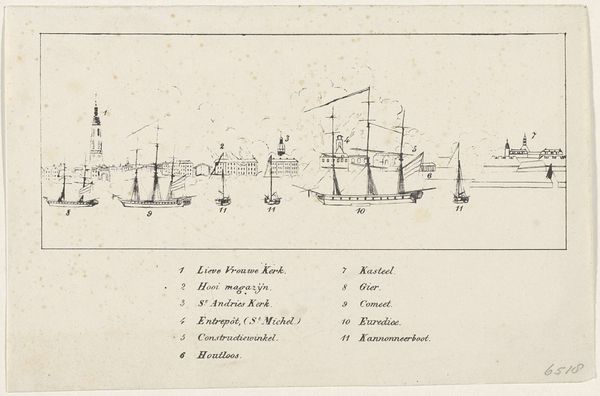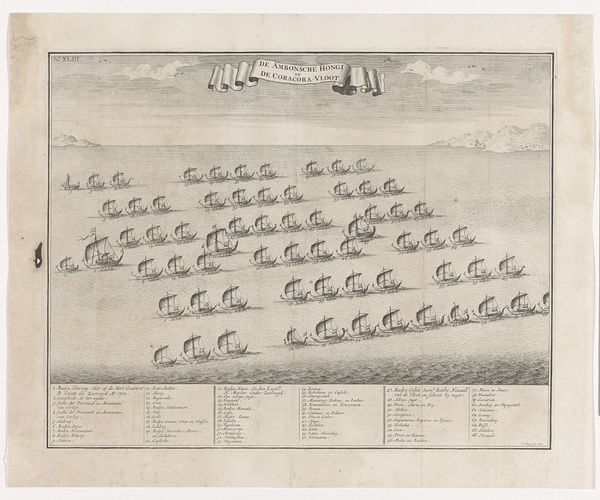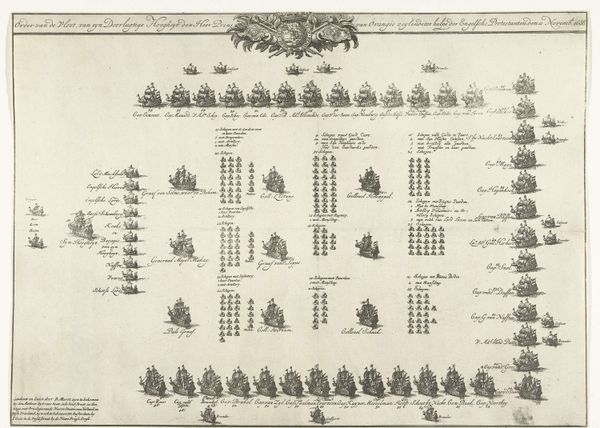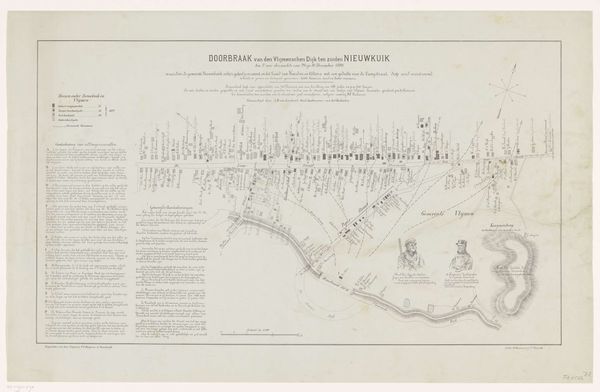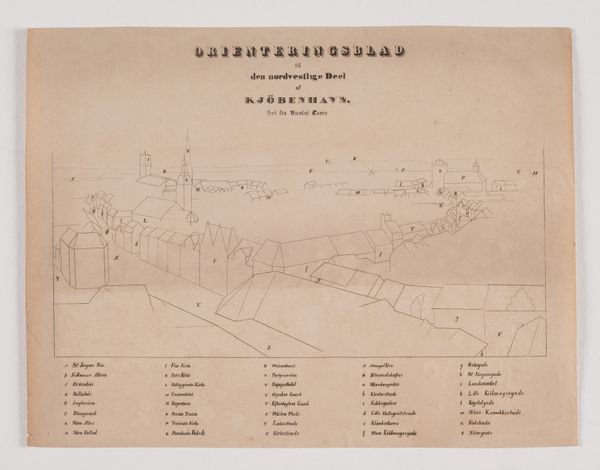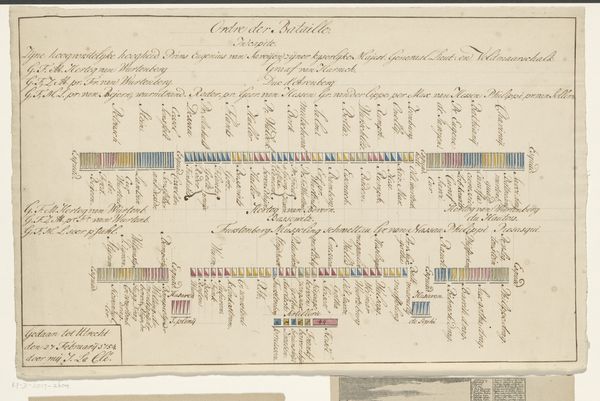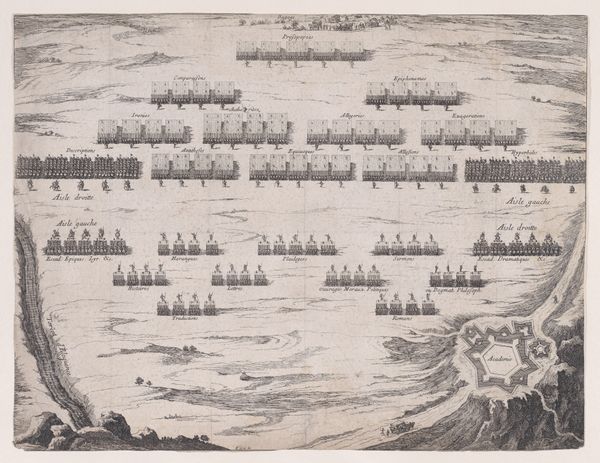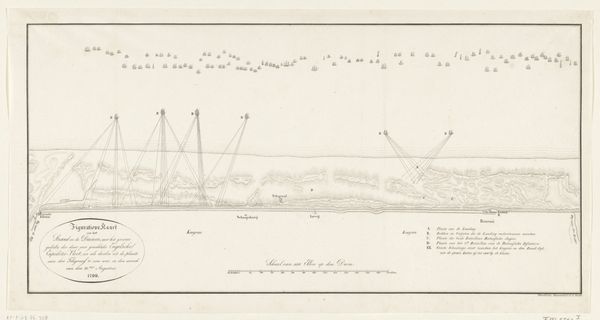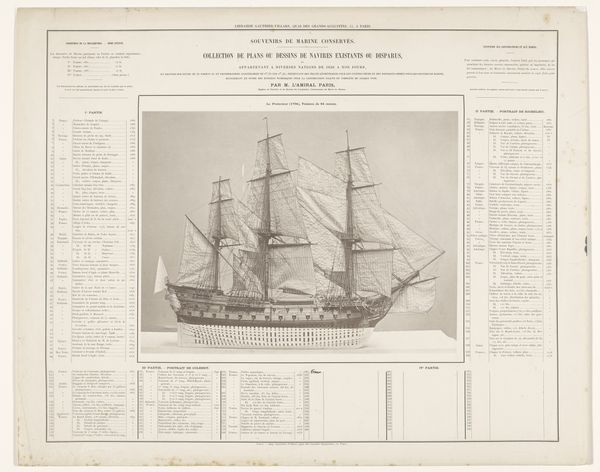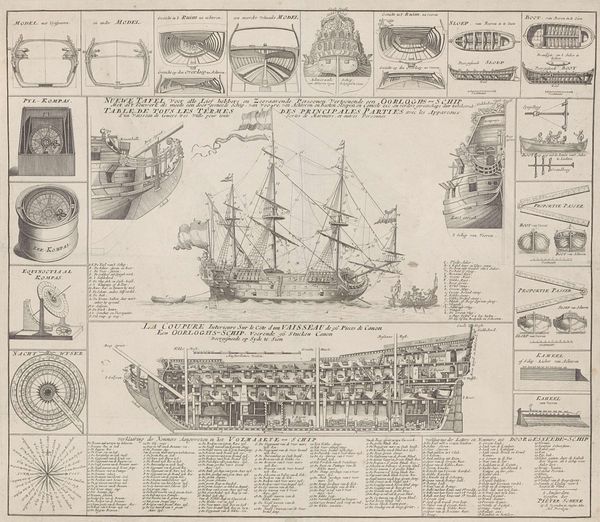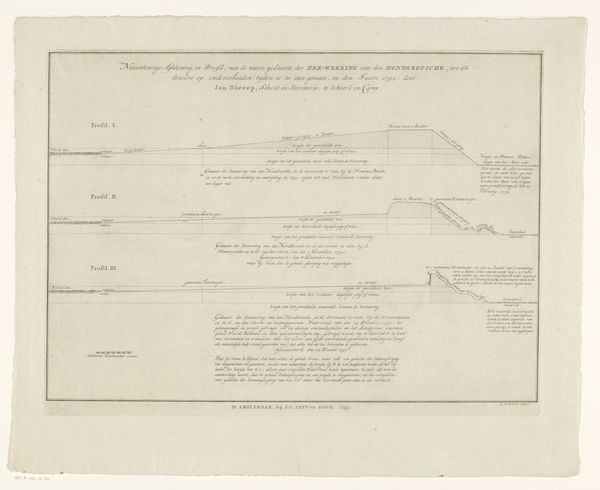
drawing, print, etching, paper, ink, engraving
#
drawing
#
narrative-art
# print
#
etching
#
landscape
#
paper
#
ink
#
geometric
#
ancient-mediterranean
#
romanticism
#
cityscape
#
history-painting
#
academic-art
#
engraving
#
realism
Dimensions: height 225 mm, width 414 mm
Copyright: Rijks Museum: Open Domain
Editor: This drawing, "Verklaring bij de prent Gezicht van de zeeslag bij Kopenhagen," created in 1801, seems like an attempt to capture a historical event, but it's rendered almost like a schematic, an inventory, not just an illustration. How do you interpret this work? Curator: It's fascinating how this piece straddles the line between objective record and subjective representation. The lists and geometric shapes—almost hieroglyphic—evoke a need to impose order on a chaotic event. The sea battle itself becomes less about the visceral experience and more about the symbolic accounting of power and loss. Notice how each ship is almost an ideogram, bearing cultural and national weight. Editor: An ideogram of power, I see what you mean. It's like each ship represents a chapter in a much larger story, but how does the map-like quality contribute to this? Curator: The map serves not just as a visual aid, but as a tool for cultural memory. Battles, like sacred events, need fixed points, spatial relationships that cement the narrative in the collective consciousness. This image isn't just about what happened; it's about how the culture wants to remember what happened. Does that ring true to you? Editor: It does. I hadn’t considered the act of remembering as being so actively shaped. I initially saw it as detached and documentary, but there’s a very human story embedded in the arrangement itself. Thanks! Curator: Precisely! The visual language speaks to continuity, linking the past, present, and future interpretations of the event, influencing how we see ourselves. It has been a pleasure.
Comments
No comments
Be the first to comment and join the conversation on the ultimate creative platform.

